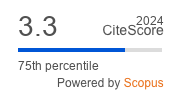Article | Open Access
What Makes a Difference for Disadvantaged Girls? Investigating the Interplay between Group Composition and Positive Youth Development in Sport
| Views: | 6535 | | | Downloads: | 2449 |
Abstract: It has been suggested that group composition can influence the experiences of individual group members in social programmes (Weiss, 1998). The purpose of the present study was to examine the relationship between peer group composition in sports programmes and positive youth development (PYD) in disadvantaged girls, as well as to determine whether it was moderated by personal characteristics. Two hundred young women aged between 10 and 24 completed a questionnaire including, among others, the “Youth Experience Survey for Sport” (YES-S) (MacDonald, Côté, Eys, & Deakin, 2012) and questions regarding participants’ socio-economic characteristics (i.e., nationality, education, family situation). Multilevel regression analyses were performed to take into account the hierarchical data structure. At the group level, a higher percentage of girls from a low educational track and with a migration background predicted greater PYD, as indicated by higher levels of personal and social skills, cognitive skills and goal setting. Results showed interaction effects between the respondents’ family structures on the participant and team levels. The overall statistical models for the different developmental domains accounted for variance ranging from 14.7% (personal and social skills) to 30.3% (cognitive skills). Results indicated that the extent to which disadvantaged girls derive benefits from their participation in sport also depends on the group composition. The interaction effects between the group composition and individual characteristics suggest that when girls participate in a group of similar peers, those from non-intact families will derive more benefits than their counterparts from intact families.
Keywords: disadvantaged girls; group composition; peers; positive youth development; sport
Published:
© Hebe Schaillée. This is an open access article distributed under the terms of the Creative Commons Attribution 4.0 license (http://creativecommons.org/licenses/by/4.0), which permits any use, distribution, and reproduction of the work without further permission provided the original author(s) and source are credited.


